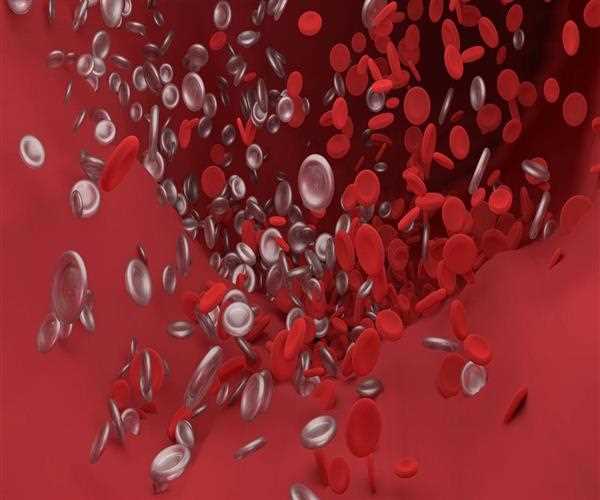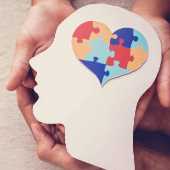Search here

29-Mar-2022
How to tell if you have Blood clots
Have you ever had a paper cut or nick while shaving? When this happens, a blood clot comes to the rescue. It stops the bleeding immediately, and once it is done, it usually breaks down. However, things can go wrong from time to time.
Insoluble blood clots are harmful and can lead to major medical problems. They can be found in the arteries of almost any part of the body. They can be harmful to your feet, especially if you sit for long periods.
You can develop a clot in your arteries, which supplies oxygen from your heart to all the cells in your body. The results can be devastating. This can prevent oxygen from reaching your body.
There is also the possibility of clots in the veins that return blood to your heart. When this happens, the symptoms usually appear gradually, but they are still dangerous.
If you know the warning signs, you will have the opportunity to seek immediate medical help, which will help keep you out of danger. However, it is important to note that clotting occurs in rare cases with few or no symptoms.
Arms and legs
Deep vein thrombosis occurs when a blood clot develops under the surface of your skin (DVT) in one of the deep veins in your arm or leg. Clots can travel to your heart or lungs, which can be fatal.
If you do not move for a long time after surgery or on a long flight, you are more likely to develop DVT. If you experience any of the following symptoms, seek medical help immediately:
Swelling. It can occur where blood clots or may occur across your leg or arm.
Color change occurs. You may notice red or blue discoloration on your hands or feet as well as itching.
Pain. You may have aches or pains when the clot breaks. The sensation can be anything from slight discomfort to excruciating pain. You may also have pain in your leg, abdomen, or arm.
Hot skin. With painful scars or DVT, the skin around the hands or feet may feel warmer than other skin.
I have trouble breathing. When this happens, the clot can travel from your arm or leg to your lungs. You may also have a severe cough and cough blood. You may have chest pain or dizziness. To get immediate medical help, dial 911.
Leg stiffness in the lower leg. If the clot is in your calf or lower leg, you may have seizures or a Charlie horse.
Edema is accumulating. Edema (fluid accumulation) in the hands or feet is a complication of DVT. When it comes to DVT, it's usually faster. When you push over an extended area, a dimple or 'pit' may form and last for a few seconds.
Swollen and uncomfortable veins. Unrest increases over time.
Heart
Heart attack can be caused by blood clots forming in or around your ticker. Keep an eye out for the following signs:
Chest and unbearable arm discomfort
Strive, Chematorch
Shortness of breath
Lungs
Blood clots in the lungs usually begin in the deep vein of the arm or leg, split and reach the lungs. When this happens, you will have a pulmonary embolism, which is a life-threatening condition.
If you experience any of the following symptoms, seek medical help immediately:
Have trouble breathing or having trouble breathing?
You are experiencing chest pain.
Start coughing
Starts sweating.
Feeling a little
May the Do.
Blood clots form when fat accumulates in the walls of the blood vessels that carry blood to your brain. They can also occur as a result of a head injury.
A clot begins to form in another part of your body, such as your chest or neck, which enters your bloodstream and travels to your brain, causing ******.
Keep an eye out for the following signs:
You are having problems with your vision or speech.
An objection
The broad sense of vulnerability
Abdomen
Blood clots form in the veins that carry blood from your intestines. They can be caused by conditions such as diverticulitis or liver disease, as well as birth control pills.
How do you know things like this are happening? If you experience any of the following problems, consult your doctor:
- Vomiting or nausea
- Your stomach pain is very severe and it gets worse after eating.
- Diarrhea
- Stools ******
- Feel a bloated
- Blood clots in your kidneys can prevent your kidneys from removing waste from your body. It can also lead to high blood pressure or kidney failure.
It is very dangerous, so keep an eye out for the following signs and symptoms:
- Pain in the side of your abdomen, in your legs, or in your thighs
- ***** with blood in it
- Fever
- Vomiting or nausea
- Very high blood pressure
- Leg edema nowhere to be seen
- Shortness of breath

Student
An inquisitive individual with a great interest in the subjectivity of human experiences, behavior, and the complexity of the human mind. Enthusiased to learn, volunteer, and participate. Always driven by the motive to make a difference in the sphere of mental health - and normalize seeking help through a sensitive and empathetic approach
Join Our Newsletter
Subscribe to our newsletter to receive emails about new views posts, releases and updates.
Copyright 2010 - 2025 MindStick Software Pvt. Ltd. All Rights Reserved Privacy Policy | Terms & Conditions | Cookie Policy